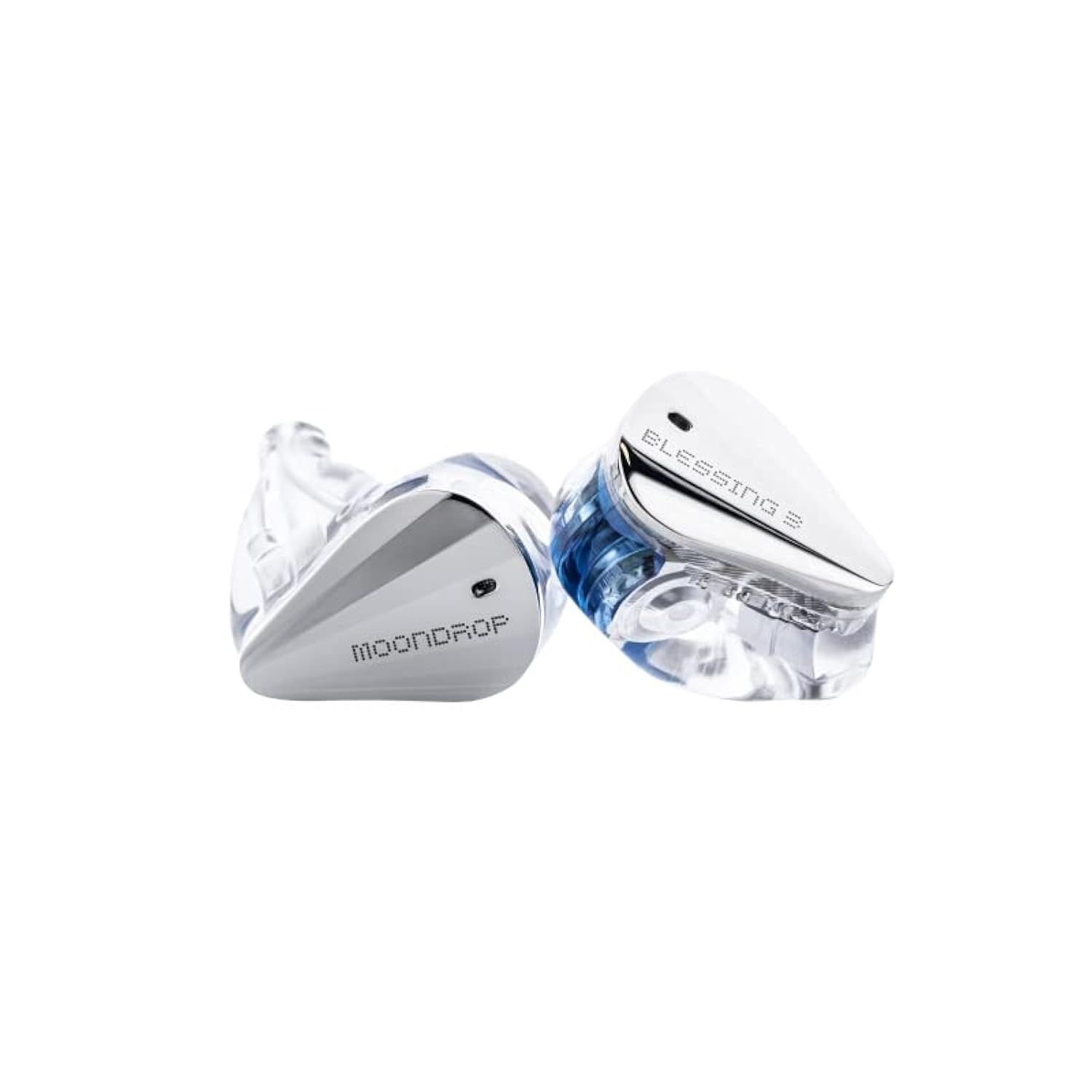Blessing 3vs.Cantor
Sound & Specs Comparison
Information
Both IEMs are widely regarded in the audiophile community. See how they differ in terms of sub-bass response, upper mids, clarity, and overall tonality. Spider charts and rating breakdowns included.
Objective Comparison
Facts, details, stuff.
| General Info | Blessing 3 | Cantor |
|---|---|---|
| Brand | Moondrop | AFUL |
| Country | China | Taiwan |
| IEM Description | The Moondrop Blessing 3 is a hybrid IEM that blends technical detail with a clean, spacious sound. Featuring dual dynamic drivers and four balanced armatures, it delivers tight bass, clear mids, and airy treble with impressive precision. The overall tuning is balanced with a slightly bright edge, making it well-suited for those who enjoy clarity and separation without excessive warmth. | The AFUL Cantor combines technical precision with musicality in a hybrid design. Featuring a dynamic driver for powerful bass and multiple balanced armatures for clean mids and sparkly highs, it delivers a spacious soundstage with excellent separation. Tuning leans slightly toward a balanced-bright signature, making it a solid choice for detail lovers who still want some low-end punch. |
| Price Level | 100 – 500 | 500 – 1.000 |
| Housing & Driver | ||
|---|---|---|
| Driver Config | Hybrid | Multi-BA |
| Driver Types | Dynamic Driver + Balanced Armature | Balanced Armature |
| Shell Material | – | – |
| Cable | – | 4Braid 5N OFC Cable |
| Technical | ||
|---|---|---|
| Freq Range | – | – |
| Impedance (Ω) | – | 20 |
| Sensitivity (dB) | – | 106 |
| Crossover | – | RLC Network Electronic Crossover |
| Platform Info | ||
|---|---|---|
| Comments | 0 | 1 |
| Visit Count | 85 | 128 |
| External Reviews | 0 | 1 |
Meta Ratings
// Nothing to compare yet.
Sound Characteristics
Low-frequency extension on Cantor feels c more natural and authoritative, while Blessing 3 lacks some reach (8.5 vs 6). It renders bass with c greater punch and separation, where Blessing 3 sometimes feels bloated (9 vs 5.5). Listeners may find the low-end impact on It m more engaging during high-dynamic passages (8.5 vs 6.8). The lower midrange on It blends e more smoothly into the bass region, avoiding the disconnect found in Blessing 3 (8.5 vs 7.3). It strikes a a better balance between presence and smoothness in the upper mids compared to Blessing 3 (8 vs 7). Instruments like violins and brass are portrayed with a more brilliance on It, while Blessing 3 sounds slightly dull (8 vs 6.8). It paints a a broader sonic landscape, offering better instrument positioning across the stage (8 vs 7.3). It retrieves micro-details a more effectively, revealing nuances that are less apparent in Blessing 3 (8.8 vs 6.8). It organizes musical elements a better across depth, enhancing spatial realism over Blessing 3 (8.3 vs 6). Instruments remain intelligible on It even during busy sections, showing c better handling of masking than Blessing 3 (8 vs 5.3). Notes played through It feel n weightier and fuller, giving a more satisfying impact than those from Blessing 3 (7.5 vs 6.3). It hits with a more authority during transients, creating a more explosive effect than Blessing 3 (8.5 vs 6). It controls harsh sibilant peaks m more effectively, making vocals smoother than on Blessing 3 (8.5 vs 4.8). It renders timbres with a better harmonic balance, preserving the character of instruments more accurately than Blessing 3 (7.5 vs 5). The overall tonality of It is a more balanced and cohesive, offering a sound signature that feels better tuned than Blessing 3 (8.8 vs 6.8). It renders texture a more precisely, making instrument surfaces and vocal grain more palpable than Blessing 3 (8 vs 6.8).
| Blessing 3 | Cantor | |
|---|---|---|
| Sub Bass | 6.0 | 8.5 |
| Bass | 5.5 | 9.0 |
| Bass Feel | 6.8 | 8.5 |
| Lower Mids | 7.3 | 8.5 |
| Upper Mids | 7.0 | 8.0 |
| Lower Treble | 6.8 | 8.0 |
| Upper Treble | 7.3 | 7.5 |
| Sound Stage Width | 7.3 | 8.0 |
| Detail | 6.8 | 8.8 |
| Layering | 6.0 | 8.3 |
| Masking | 5.3 | 8.0 |
| Note Weight | 6.3 | 7.5 |
| Slam | 6.0 | 8.5 |
| Sibilance | 4.8 | 8.5 |
| Timbre Color | 5.0 | 7.5 |
| Tonality | 6.8 | 8.8 |
| Texture | 6.8 | 8.0 |
Tonal Signature
// Nothing to compare yet.

